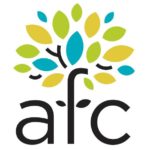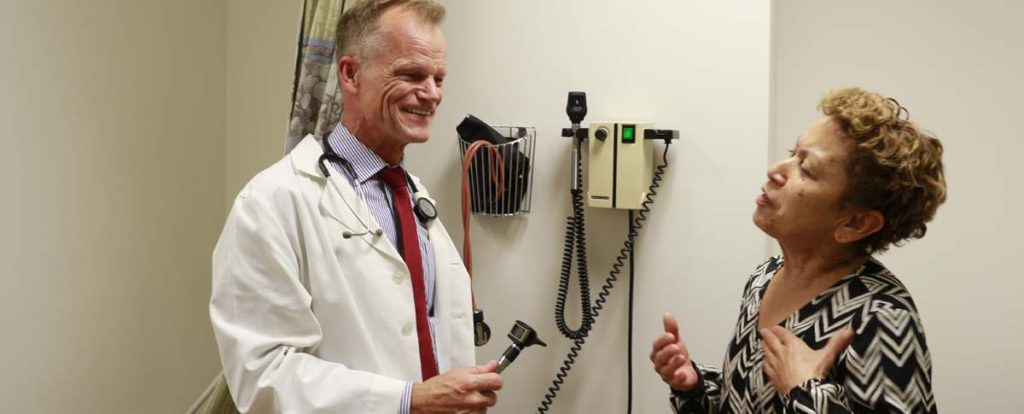Not just Spanish, but Mongolian is no problemo
At first blush, the story is a familiar one. Facing a national health crisis without the ability to see patients in person, a healthcare provider makes the predictable transition to telemedicine, and along the way, discovers that what seemed for a long time like a complicated, pie-in-the-sky idea was actually quite practical…and doable.
With a little training here and there, physicians and nurses get on board quickly. And patients? They soon discover that the hassles that so often come with going to the doctor – day care arrangements, transportation, time off of work, among them – all those things are no longer as much of a consideration. Patients, they would come to find out, are all over telehealth.
 For the past two years, that pretty much describes the paradigm of healthcare in America in the era of Covid. But at the Arlington Free Clinic, which provides comprehensive medical, dental and behavioral healthcare to about 1500 patients each year in one of the nation’s most diverse communities, there was another layer to consider.
For the past two years, that pretty much describes the paradigm of healthcare in America in the era of Covid. But at the Arlington Free Clinic, which provides comprehensive medical, dental and behavioral healthcare to about 1500 patients each year in one of the nation’s most diverse communities, there was another layer to consider.
For nine in 10 of the clinic’s patients, Spanish is their first language. Potential language barriers presented a complication that many practices did not have to address. But the Arlington Free Clinic knew it had to figure this out.
“Telehealth was something that was always talked about, but we assumed it would be a no-go because of a lack of resources,” says Kate Nadeau, director of volunteer resources at the clinic, which boasts some 430 volunteers. “And for a long time, that was actually the case.”

But she says things changed about four-to-five years ago when patients and providers alike began making more of a transition from flip phones to smartphones, putting the internet in folks’ hands. And so, when Covid shut down in-person appointments in March 2020, the AFC team knew that there was a foundation of workable technology that could make telehealth work.
Then came the matter of finding an appropriate platform. While Zoom would give them the flexibility they would need to add multiple concurrent users the way they would like – accommodating patients, the physician and nurse and an interpreter – it required patients to download the app before they could use the platform. That requirement had the potential to forestall broad use, given issues with language and computer literacy.
Enter Doxy.me, an online platform that did not require any advanced prep and that was available for a modest monthly fee. What’s more, it had a feature in….wait for it….Spanish!
“Doxy.me was really a lifesaver,” Nadeau says. “It helped us overcome the hurdle of getting volunteers (including physicians and nurses) and patients used to communicating via telehealth. Most of our patients are very competent but some aren’t always comfortable with technology. Doxy made it easy.”
Then came another unexpected wrinkle. While Doxy.me was easy to use, it’s still a technology platform, and there are bound to be technical hiccups here and there. A patient or doctor having trouble logging on. One appointment running long with the next appointment not knowing why there has been a delay. And so what the AFC decided to do was to create a new position – a telehealth session facilitator. It’s the job of the TSF to do just that – help facilitate the technical side of the appointment, making sure the patient is logged on, that interpreters are in place and that there are no bugs in the connection, among other things.
“We’re very fortunate,” Nadeau says. “We have some great relationships with nearby universities, who have bilingual students who are interested in shadowing physicians, and so this position gives them a chance to accomplish their goals while helping us do our work.”
The clinic has a good number of Spanish-speaking volunteers, but some of their patients speak languages from their native Africa, and it also serves a Mongolian population. For these folks, AFC relies on an interpreting service. Call them up, tell them what language you need, and they’ll connect you to a qualified interpreter on a fee-for-service basis.
Despite the success and popularity of telehealth, the clinic has moved in fits and starts toward a hybrid model that would allow some practices (dermatology and other specialty care, for example) to see patients in person. By and large, it’s the clinic’s nurses – who provide continuity of care for each patient – in consultation with the physicians, who help determine whether a patient needs to be seen in person or can be served via telehealth.
Throughout the pandemic, telehealth provided a much-needed level of flexibility. During peak Covid surges, as many as 70 percent of patients were seen via the internet, a percentage that dipped to 30 percent when the virus ebbed.
“We had started returning to more and more onsite appointments, but when Omicron appeared, we quickly pivoted back to telehealth to protect the health of our patients, volunteers and staff without compromising quality of care,” Nadeau says.

